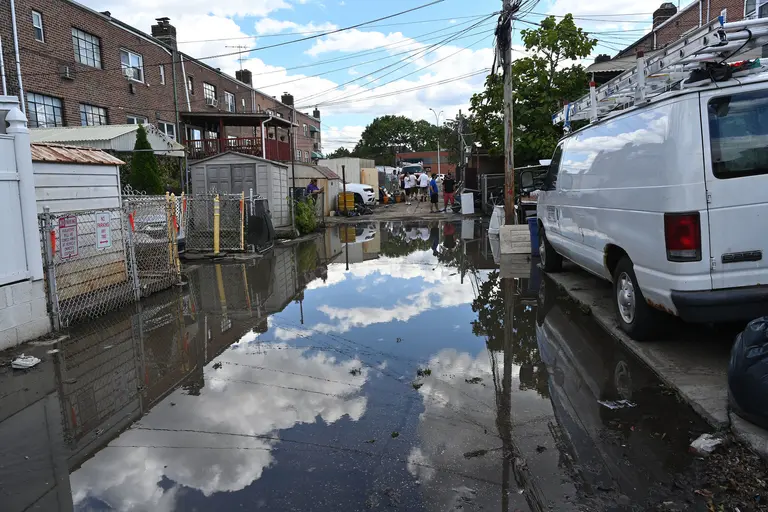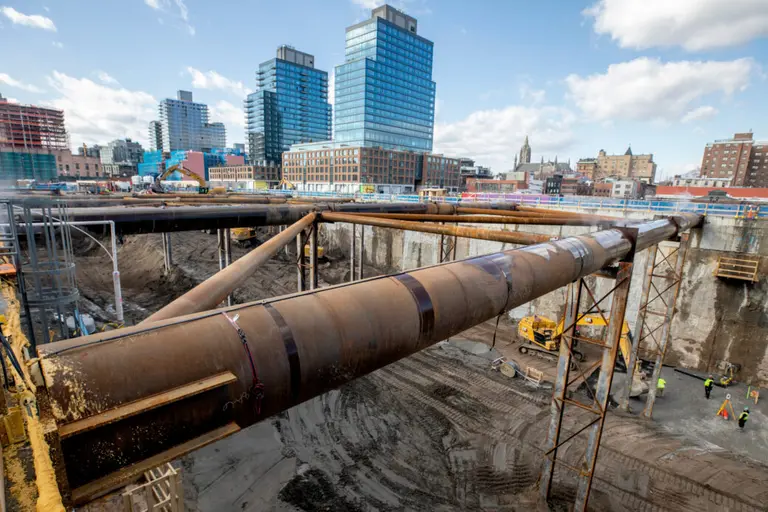New bill could limit sidewalk scaffolding to six months or less

Like an unwanted visitor, well-intentioned but present well after becoming a daily nuisance, New York City’s familiar green sidewalk scaffolding seems to contradict the laws of gravity: It goes up but never really seems to come down. Now, the New York Times reports, a new City Council bill would require that scaffolding be taken down after six months–sooner if no work is being done.
The new bill, to be introduced Tuesday by Councilman Ben Kallos, would provide three months for building owners to complete facade repairs, with one three-month extension allowed. If the deadline passes and the scaffolding remains, the city will step in and do the work at the owner’s expense. The new legislation would allow exceptions for things like bad weather or permit delays, and if public safety would be in jeopardy if the scaffolding were removed (which is why we thought the scaffolding was there in the first place).
Sidewalk scaffolding is required as part of a 1980 city law insisting on regular inspections of building facades after the 1979 death of a Barnard College student after piece of terra cotta fell on her from an apartment house on the Upper West Side. Today scaffolds, also known as sidewalk sheds, are everywhere: 2015 saw 6,667 permits issued city-wide for new sheds, up from 1,016 in 1990. The building boom in recent years is thought to be largely responsible for this shed outbreak.
Under city law, a shed is required for any building whose facade could pose a danger. Therein lies the catch-22: Timothy Hogan, deputy commissioner of enforcement for the city’s Department of Buildings, said that after a safety inspection sweep in January, it was found that less than 2 percent of the sheds could be taken down.
The real problem is that the work requiring the scaffolding in the first place often takes forever to get done. In the words of advertising sales consultant and UES co-op board member Robert Feiner, “Unless you’re building the Taj Mahal and using hand tools, it shouldn’t take that long for facade work,” pointing out nearby building repairs that have stalled while new construction condos have been risen from the ground up next door. The city’s Buildings Department currently can’t set a specific deadline for repairs to be completed and for the sheds to subsquently come down.
Mr. Kallos, who represents the Upper East Side, has received numerous complaints about the sheds; what’s more, he doesn’t like getting dripped on by water or the always ominous “something worse.” While the bill will likely have support from residents and businesses (for whom it’s sometimes beyond a mere nuisance) building owners predictably oppose it. Carl Hum, a senior vice president for the Real Estate Board of New York, has called the bill “ill conceived.” Others have pointed out that building owners may not have the money to make costly repairs within the allowed time.
Says Frank Ricci, the director of governmental affairs for the Rent Stabilization Association, “The bottom line is sometimes it’s cheaper, and safer, to leave up the sidewalk sheds than to do the repairs because the repairs can go into millions of dollars.” The Buildings Department is reviewing the new proposal. According to department spokesman Joseph Soldevere, “While the councilman’s bill is well intentioned, this is a tough problem.”
[Via NYT]
RELATED:




























